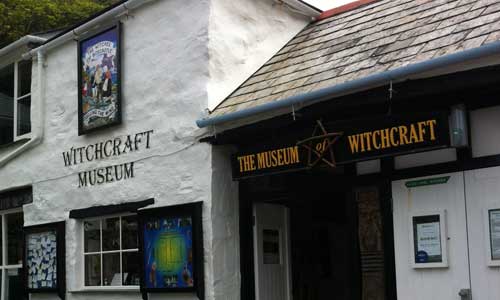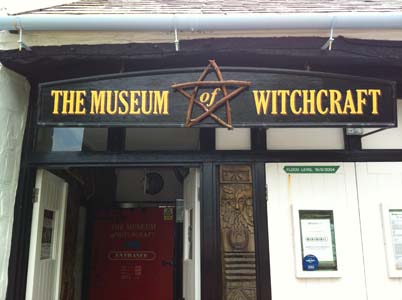For anyone wondering whether the ancient beliefs of pagan Britain are still alive and well, a visit to The Museum of Witchcraft will set their minds at rest. Or not, as the case may be, writes MATT WINGETT

They’ve done a great job of rebuilding Boscastle.
Pretty much wiped out in a flash flood of biblical ferocity in 2004, the tiny Cornish village has risen from the mud. The bashed cars carried down by the swollen river have been cleared and village is back to what it always was: a place of charm – and of charms.
The Museum of Witchcraft is down by the river, near the National Trust gift shop, and sets a rather ghoulish counterpoint to the tweedy neatness of its neighbour.
A centuries-old house that looks like it was carved straight out of the rugged granite of the valley, the museum has been filled with artefacts of witchcraft collected by its founder Cecil Williamson and his successors since 1951.
The exhibits tell an alternative folk history of charms, enchantments, spells and natural magic that has been an undertone to the official history of the country of Cornwall. There is magic here, no doubt.
From the two cats cruelly buried alive in the walls of a house, now frozen in their dried and mummified death throes in the Museum of Witchcraft window, you enter into a world very different from the touristy straightforwardness of pirates and pasties the modern Cornwall offers.
Museum of Witchcraft, filled with artefacts
Room after room is filled with Witchcrafty artefacts. The first is a jumble of depictions of witches throughout history and throughout literature. Ancient drawings and notes, carvings and figurines, all depicting the traditional image of the witch in history – the pointed hat and a broom being the two great symbols of her trade.
Dolls abound, some used as “poppets” that were stuck with pins, or with benign enchantments to aid the witch’s clients.
There is a fascinating medieval depiction of witches leaving a house by the chimney to fly, not a piece of fancy from J K Rowling in her Harry Potter series as I had imagined, but based on solid research of witchcraft tradition. And there are further tools of the witch’s trade: herbs, drums, flagons, knives, mirrors.
The museum is rammed with all manner of witchcraft artefact, and it doesn’t overlook the witch’s persecutors, guided by their book the Malleus Maleficarium or the Hammer of the Witches and by King James the First’s tome on Daemonologie.
The witchfinder’s tools here are ghoulish and bizarre. A “witch pricker” was a long pin designed to be stuck into a “devil’s mark” (a mole or blemish on the skin of a suspected witch). If the witch pricker didn’t draw blood, then undoubtedly the woman was a witch.
And for the witchfinder to stack the odds a little, pins were designed with retractable points, to give the illusion of malefic imperviousness to injury.
There is a set of scales, on one side the victim would be placed, and on the the other a bible. If the bible proved heavier, then undoubtedly the unfortunate woman was a witch. And somehow, sometimes, it did prove heavier…
There is also a very neat section on Christian magic – the use of amulets to ward off the evil eye, and a votive heart designed to absorb the power of saints by sympathetic magic.
It’s an extraordinary collection of charms, magic and spells, and isn’t only confined strictly to traditional witchcraft. The good old “Fums up” charms used in the Wars, the effigies of Hitler and Kaiser Bill with pincushions in their backsides, along with official attempts to outguess Hitler’s next move by using occultists like Dennis Wheatley and Ian Fleming add a different angle to how state and magic have rubbed along together in times of trouble.
The skulls, too, are eerie reminders of the doorways between life and death some witches travel, and a recording of Aleister Crowley reciting one of his spells adds to the otherworldly mix.
It’s an extraordinary experience, and one that will leave you thinking, be amazed and stunned.
Interestingly, the charms seem to have worked for the museum. I first visited it way before the flood in the 1980s, when a building opposite was being used to sell anti-witchcraft, pro-Christian literature.
The 2004 flood washed that anti-Witchcraft shop away, and it was completely rebuilt, with its new owners, the National Trust, selling a nice line in tourist nick-nacks, ice cream and cakes, while the museum still stands.
For anyone interested in witchcraft, magic, with how humanity has organised their understanding of the world, and with the ancient knowledge of mystical Britain, the Witchcraft Museum at Boscastle is a must-see.
Check out MATT WINGETT’s blog LIFE IS AMAZING. Matt’s previous articles for Spooky Isles can be seen here



Good article!